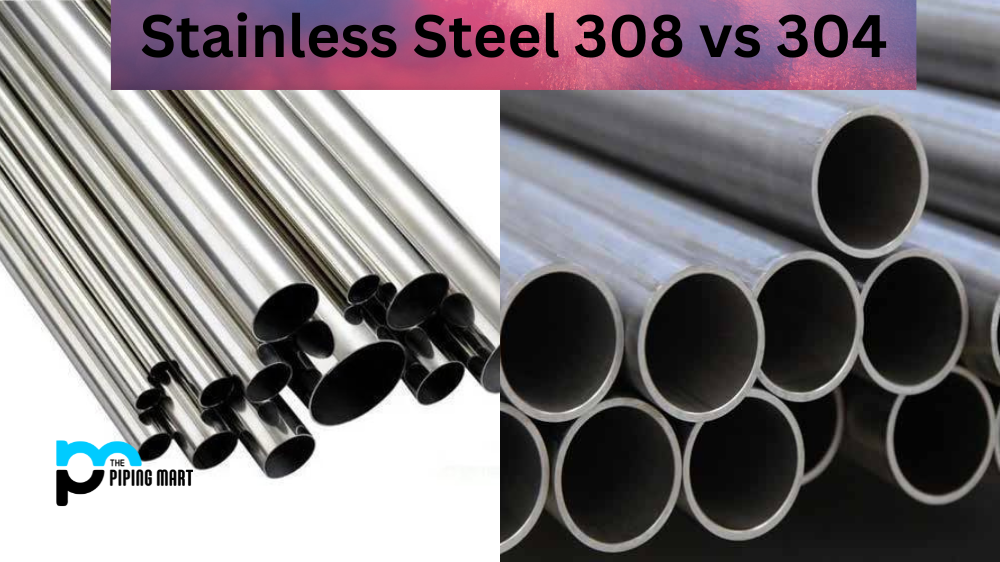Stainless steel is popular in various industries due to its excellent corrosion resistance, low maintenance, and durability. However, not all stainless steel grades are the same, and choosing the right one for your application is essential. Two popular alloys used in fabrication work are stainless steel 308 and 304. Both have unique properties that make them ideal for specific applications. If you need clarification about which alloy to choose, this article will help you understand the difference between stainless steel 308 and 304.
What is Stainless Steel 308?
Stainless steel 308 is an alloy containing chromium, nickel, and manganese. It is ideal for welding due to its high corrosion resistance and excellent mechanical properties at low and high temperatures. With its excellent formability and fatigue strength, it is widely used in metalworking applications like kitchen appliances, medical devices, structural supports, chemical processing equipment, etc.
What is Stainless steel 304?
Stainless steel 304 is an alloy of iron, nickel, and chromium. It is highly corrosion-resistant and has a high-temperature strength. This makes it ideal for use in harsh environments, such as medical equipment and chemical processing materials. It’s also known for its ease of fabrication and low cost, making it very popular among manufacturers who require quality products on a budget.
Difference Between Stainless Steel 308 and 304
Chemical Composition
The primary difference between stainless steel 308 and 304 is their chemical composition. Stainless Steel 304 has a higher percentage of chromium and nickel, making it a better choice for applications requiring high corrosion resistance. On the other hand, Stainless Steel 308 has a higher percentage of manganese and nickel, with a lower percentage of chromium. It makes it ideal for welding and high-temperature applications.
Weldability
Stainless steel 308 is considered a better welding alloy than stainless steel 304 due to its lower carbon content. The lower carbon content in 308 gives it better weldability, making it easier to work with. Stainless steel 304, on the other hand, has a higher carbon content, which makes it harder to weld and subject to cracking.
Applications
Stainless steel 308 is best suited for welding applications and high-temperature environments. Its lower carbon content prevents carbide precipitation formation, a common cause of weld failure. Stainless steel 304, on the other hand, is ideal for applications that require excellent corrosion resistance, including food processing equipment, household appliances, and medical equipment.
Price
Price is also a significant factor in selecting the right alloy. Stainless steel 304 is generally more expensive than stainless steel 308 due to its higher chromium and nickel content. However, considering the corrosion resistance and how well it would fare in specific applications, it’s often worth the added cost.
Maintenance
Both stainless steel 308 and 304 require minimal maintenance, but stainless steel 304 wins in this category. Its high chromium and nickel content provide superior corrosion resistance, preventing rust and staining and minimizing the need for maintenance.
Conclusion
Choosing between stainless steel 308 and 304 can be challenging, but it’s essential to understand their unique properties and how they fare in different environments. While both are excellent alloys, stainless steel 308 excels in welding and high-temperature applications, while stainless steel 304 is ideal for applications that require excellent corrosion resistance. Take the time to evaluate your application and consult with a professional to determine which alloy to use. Always use a reputable brand and quality materials for optimal results when in doubt.

Abhishek is a seasoned blogger and industry expert, sharing his insights and knowledge on various topics. With his research, Abhishek offers valuable insights and tips for professionals and enthusiasts. Follow him for expert advice on the latest trends and developments in the metal industry.




